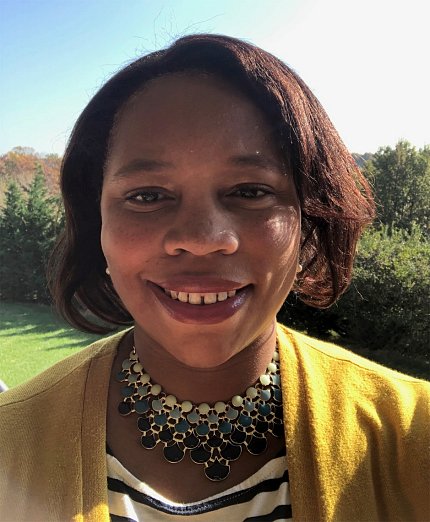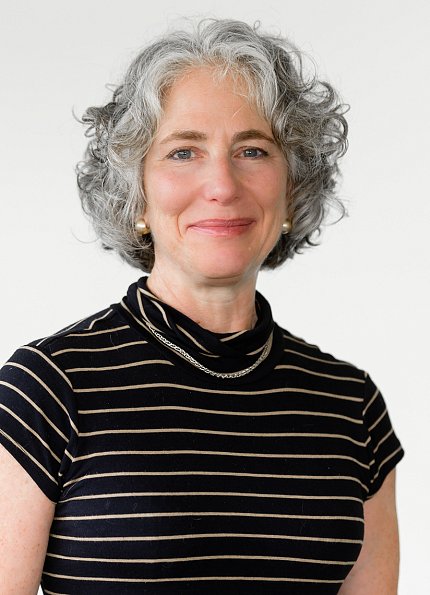Women’s History Month
Meet More Inspiring Women Leaders at NIH
In this second installment of a series on inspiring women leaders at NIH, the Record caught up with two administrators, a veterinarian and a staff scientist. They shared their backgrounds, how they found science and some of the challenges they continue to face in their careers. They also offered insights and sound advice.
A New Generation of Leadership

Ascending to the acting number two spot at NIH requires skill and determination. Dr. Tara Schwetz has both, and she inspires a younger generation of women seeking to advance their careers in science and policy.
Schwetz came to NIH more than a decade ago as an American Association for the Advancement of Science (AAAS) science and technology policy fellow right out of the lab. “I had always thought I would go into research and industry,” she recounted. But then a new opportunity presented itself.
An AAAS fellow from NIH came to speak at Vanderbilt University, where Schwetz had been conducting postdoctoral research on diabetes. Schwetz then found her calling—science policy at NIH—and has since worked at multiple NIH institutes.
“[This path] gave me an opportunity to have a much broader impact than the research I was focused on specifically in the lab,” she said.
Schwetz, now acting principal deputy director of NIH, has co-led multiple NIH-wide efforts. She’s especially proud of her recent detail at the White House to help establish ARPA-H—a new agency to accelerate biomedical breakthroughs.
“I think it’s not often in someone’s career when you get to work on a project that ultimately goes from an idea into a fully funded and authorized entity,” she said. “It was great to…help shepherd that along, and to then have something you’re working on called out in the State of the Union is pretty exciting.”
When Schwetz talks to groups about job promotion and career transition, she advises people to push their boundaries. If you’re too comfortable, thinking that you’ll immediately know how to master a new job, she said, there’s little room to learn and grow. “If thinking about that move scares you just a little bit, it probably means you’re making the right call on your career path.”
Schwetz has always aspired to work in science. She initially wanted to be an anesthesiologist, but her love of the lab led her to graduate school, instead of medical school, and she ultimately received her doctorate in biophysics.
It was a challenge though for Schwetz to even contemplate college. Her parents had moved from a tiny, rural Michigan town to Florida just before she was born. Schwetz was the first person in her family to go to college and had to navigate the process on her own.
In the work world, she recognizes the stressors women face, from balancing work and family demands to confronting misogyny.
“There is still overt harassment that happens,” she said. “But I think probably what’s more pervasive are the little dismissive comments that ultimately add up.” She likened it to the sting of a paper cut versus the pain of a thousand paper cuts. These microaggressions impact women and other groups. NIH is actively working to change that culture.
“We need smart people to join our ranks from all different backgrounds and perspectives and career paths and areas of expertise,” she said. “I would encourage them to come join us.”—Dana Talesnik
Aklin Relishes Opportune Time to Work in Research

Health scientists—and those involved in biomedical research in particular—find themselves at a unique and promising juncture these days, according to Dr. Courtney Aklin, NIH acting associate deputy director. Post global historic pandemic, with an abundance of new and emerging data, tools and technology within reach, some vital new powers can be activated for human health. Aklin couldn’t be more enthused about the future.
“With Covid, there has definitely been a new floodlight on the importance of community engagement,” she says. “We are at a place where we can no longer just conduct research, put it into journals and then expect it to be put into practice...I think Covid showed very clearly, if you don’t include the community up front, if you don’t include the practitioners who are working with the community up front, then adoption of what we develop is going to suffer.”
As a behavioral psychologist, Aklin is excited about this new opening. “We now have an open opportunity,” she says. “There is a vast amount of research on how to engage and how to do community-engaged research. We can now leverage that. Same thing with health equity. There’s been research in the behavioral and social sciences on health equity for decades. We can now say, ‘Take a look, pay attention to it. Because we do have best practices. We do have an evidence base.’ I’m feeling like this is a great time. We’re finally getting closer to the integration of what needs to happen between the brain and neuroscience and behavioral science.”
Aklin arrived at NIH by way of NIMH in 2005 as an AAAS technology and policy fellow.
“It was just at the time when autism was becoming recognized as a major diagnosis and the country was trying to figure out why there was such a rise in the number of diagnoses,” she recalls. “[Autism] was already there—we just didn’t have the refined tools that we have today to diagnose it very well…[HHS] had just set up the interagency autism coordinating committee and I came in specifically to help infuse more data around it.”
That first taste of the federal science policy environment got Aklin hooked.
“I really ended up loving the impact that I could have—even as a fellow,” she remembers. “I learned that NIH is a really good platform to be able to move forward with a much bigger, broader perspective.”
Since then, the licensed clinical psychologist has held various posts of increasing responsibility at NINDS and NIMHD, all the while carving out her current niche in NIH leadership. Simultaneously, she’s also found herself modeling an effective and fulfilling balance of family and career.
The solution, she believes, is to incorporate all facets of yourself into what you’re doing. Set boundaries for your time and attention and be productive with all 24 hours each day.
She advises anyone who asks to “learn what makes you successful and stay unique and true to yourself.”—Carla Garnett
Love for Animals Inspired Career

Even as a young child, Dr. Jill Ascher knew she wanted to be a vet. “I always loved animals,” she explained, then amended, “Actually, I love anything that moves.” She laughingly recalled taking tent caterpillars for rides around the block in her toy wagon.
A small animal and exotics veterinarian initially, Ascher focuses these days on devising strategic initiatives to update and improve Division of Veterinary Resources (DVR) for staff and for DVR collaborators and customers.
Ascher became a small animal doctor but was also drawn to exotics (animals like birds, reptiles and amphibians)—an arrangement that also lent itself well to parenting her three young children, because she could schedule exotics house calls around daycare and school.
She admitted that it was difficult in those years to balance parenting with her career, something that likely still rings true for many women today. At times, it felt like Ascher had to “pick between being a good parent and a good employee.”
Her children are young adults now, but she recalls the difficulty of being a working parent. NIH’s main campus has lactation centers for employees, and Ascher, working with a dedicated team of DVR and DOHS staff, was responsible for bringing that accommodation to the Poolesville, Md., campus.
After 15 years of working in private practice, she entered the field of laboratory animal medicine, progressing to deputy director of FDA’s Division of Veterinary Services before assuming her current role at NIH in 2018.
At DVR, Ascher sees herself as an enthusiastic collaborator with her peers and a mentor to colleagues who are earlier in their careers. “Having the respect of my colleagues…is [my] greatest professional achievement,” she shared. “No one is working for me—we are all working together.”
Her advice to aspiring scientists? Firstly, it’s “a great career for women,” she said.
More generally, she advised to pay attention in school, seek out mentors and essentially “be your own advocate.”
As Ascher’s own father told her, “Find out what your passions are and then work in that area. If you love what you do, then you won’t have to work a day in your life.”—Amber Snyder
‘Bring a Different Conversation to Science’

Dr. Sue Fenton did not take the career path she had mapped out as a youngster.
“I was 100% sure that I wanted to be a veterinarian,” she says, “so, I went to the University of Wisconsin-Madison and majored in dairy science, taking as many hard-core science classes as possible… but, I [also] needed spending money. One of my friends showed me advertisements for open researcher positions in the animal sciences department. I didn’t realize this would happen, but I fell in love with research.”
The landscape for women in science careers looked a lot different then. Fenton appreciates the progress.
“There have been some very nice changes in the biomedical research field since I started in it,” she points out. “I remember doing my postdoctoral training and there were only three women [principal investigators] in our entire comprehensive cancer research center, and only one woman PI in the dairy and animal sciences departments. Now, the number of women who are leading labs has increased substantially. Wonderful to see! Women bring a different conversation to the science, as do persons of multiple races. This is especially the case in reproductive sciences, where there are many sex and race-related health disparities. I don’t think everyone appreciates that.”
Fenton was recruited to NIH in 2009 by an NIEHS pioneer.
“I was leading a research lab at the EPA,” Fenton remembers, “and I specialized in research on chemicals affecting the female mammary gland that was gaining a great deal of attention. When Linda Birnbaum became the first woman director of NIEHS, she essentially rejuvenated the National Toxicology Program laboratory, and recruited me knowing that this topic was one that NIEHS needed to cover.”
These days Fenton is working to change the STEM landscape yet again. And she wants more people to be aware of the hurdles women in science still face.
“One thing that I feel really passionate about is creating opportunities for women from racial and ethnic minority groups to get the training experiences necessary to rise to leadership levels,” she says. “Many say they want the next wave of leaders/supervisors to look different, and to be multidisciplinary. Then, there’s a real need for recruitment that is purposeful— we need to recruit and promote women and women of color—so that we can have a different-looking next generation of women leaders in science.”
In addition, she sees other issues that could use improvement: how the scientific research enterprise assesses pay equity, for example, and how the STEM workforce can provide opportunities for advancement in transparent ways. “As a women scientist advisor representative at the NIEHS, I hope to enhance these areas,” Fenton explains.
And would-be women leaders have an active role to play in their own advancement, Fenton concludes. “I have learned that women need to make sure they ask for leadership or management opportunities, if they’re not presented with them. Don’t sit back and wait for them to come.
“You have to go with your heart,” she says. “If you’re passionate about it, you can make it happen.”—Carla Garnett
The Women’s History Month profile series wraps up in the Mar. 31 edition.
